Six months ago, when the World Health Organization declared COVID-19 a pandemic, it accelerated the shift out of offices and schools and onto the Internet. Back then, we asked if the Internet was resilient enough to withstand Coronavirus. After several months of observations, we confirmed that it is, thanks to the strength, resilience and success of the open architecture that underpins it. Since then, concerns about the Internet’s ability to handle the increase in lockdown-driven traffic seem to have abated, resulting in fewer articles and blog posts on the topic.
Getting Back to Normal
As we head into the final months of 2020, some businesses have reopened in a limited capacity, allowing employees to return to their brick-and-mortar workplaces. Many students are also returning to school, whether in person or online. Yet, the lack of affordable and available Internet access remains a significant issue. Earlier this year, we heard stories about students sitting outside schools and libraries in search of reliable WiFi in order to attend classes. As the new school year starts in North America, we heard about students using WiFi signals from a local fast food chain restaurant to complete their homework. And with students now needing to rely on Internet access as a critical component of their education, people are once again highlighting the impact that Internet outages have on their daily lives.
Shutdowns Back on the Rise
Despite COVID-19 reinforcing the value of the Internet, governments are continuing to disrupt Internet access, using restrictions as a technical means of addressing social problems. Unfortunately, wide-scale, government-directed Internet shutdowns are taking place again, after an apparent multi-month pause. Since June, we have observed shutdowns in:
- Ethiopia (following the killing of a popular local singer)
- Syria (exams)
- Belarus (elections)
- Iraq (protests)
- Algeria (exams)
- Sudan (exams)
Internet shutdowns are unequivocally harmful to the global Internet and to local communities. This is why we’ve included them as one of the focus areas on the Internet Society’s new Insights platform, which will launch later this year. We’ll track the occurrence of these types of shutdown events and provide the insights necessary to support the work of policymakers, decision-makers, and civil society groups who focus on mitigating the social and economic impact of shutdowns.
The data we’ll present on Internet shutdowns will help establish a framework for measuring the frequency, duration, and network reach of shutdowns, with accompanying analysis and reporting. We’ll also crowdsource first-hand accounts and insights from local communities to explore how shutdowns are affecting local populations.
Network Impact
After six months of global lockdown measures, we should now be able to get a better sense of whether the COVID-driven changes in network traffic and connection speeds were temporary. Have these metrics returned to pre-COVID levels, or have they remained at these new normal levels? An exhaustive survey of Internet exchange point (IXP) traffic and connection speeds would be impractical for a blog post, so I’ve selected a few countries to survey here. You can find connection speed trends for your country at Ookla’s Speedtest Global Index, and many IXPs publish traffic graphs in dedicated statistics sections.
Italy
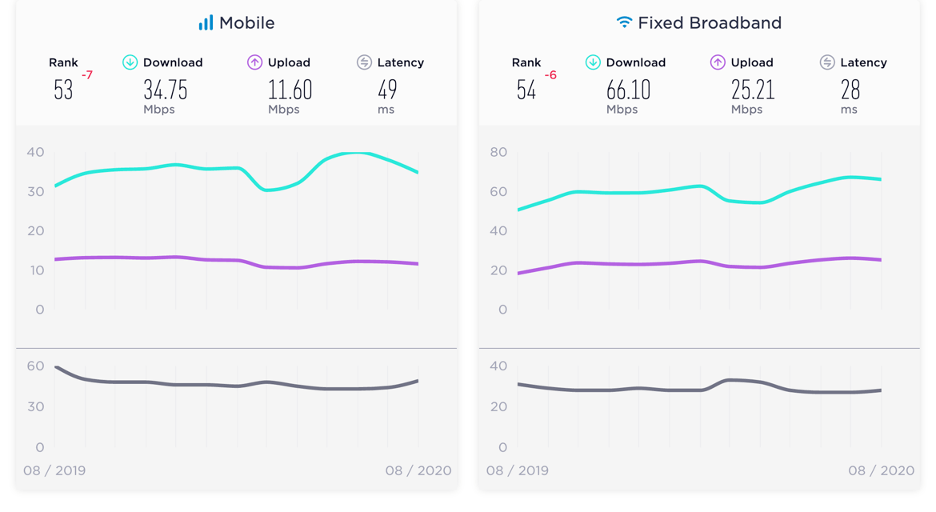
In Italy, measured download and upload speeds across both fixed and mobile connections saw nominal declines in March, but recovered to pre-pandemic levels within several months.
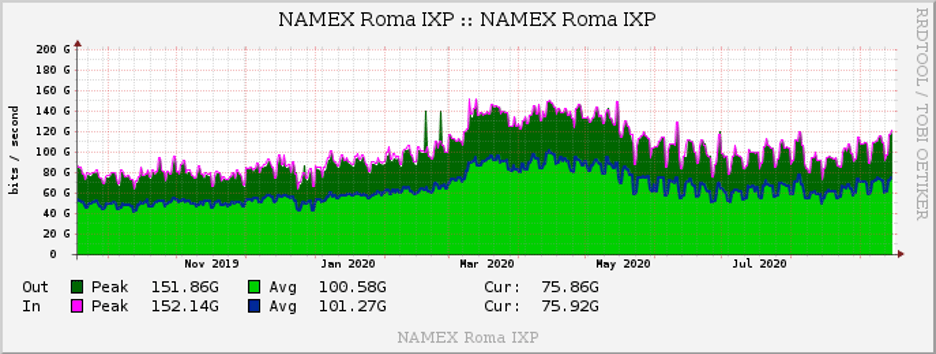
At NAMEX, an IXP in Rome, Italy, traffic increased for several months in line with stay-at-home orders, but decreased heading into mid-year. After the March-May increase, traffic levels remained at about the same levels as the start of the year.
United Kingdom
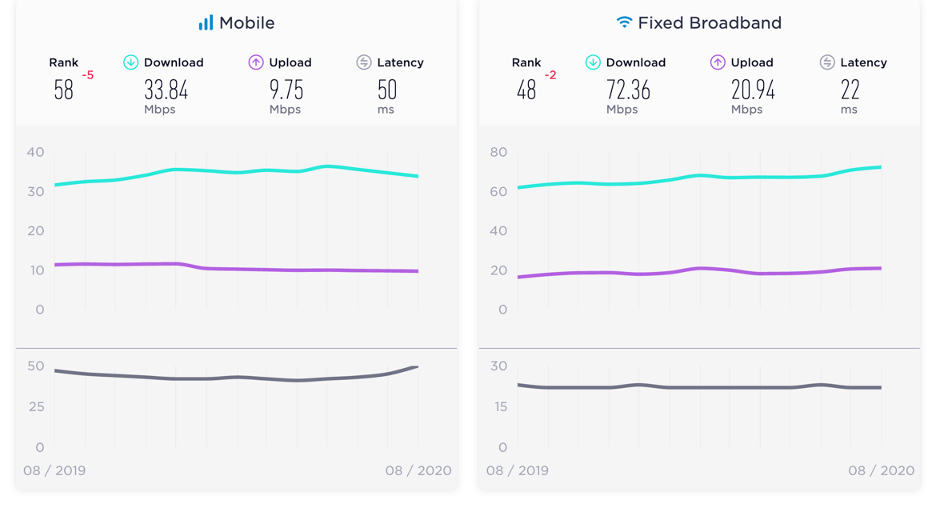
In the UK, mobile upload and download speeds saw little change as COVID took hold in March but declined towards the end of the summer. Fixed connection upload and download speeds have actually increased over the last six months.
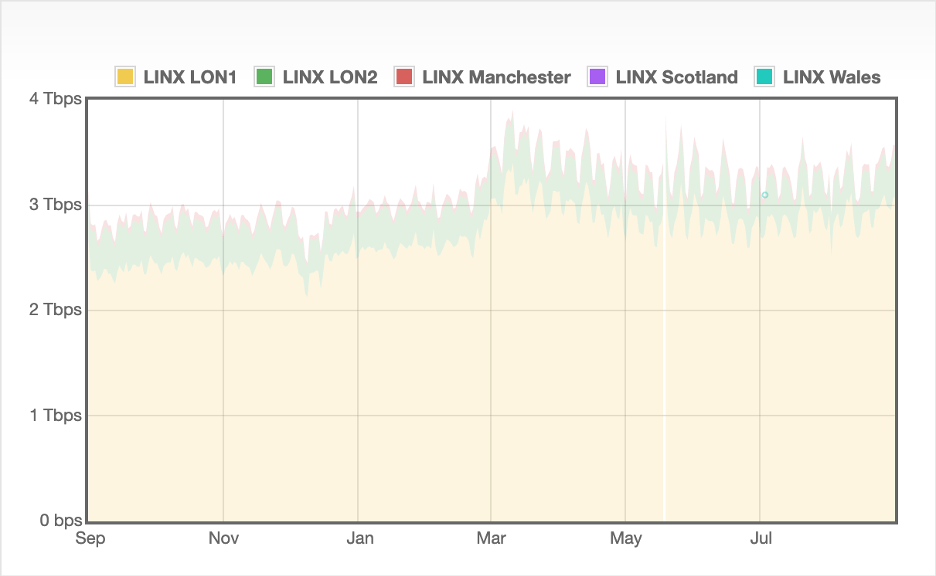
At the London Internet Exchange (LINX), which has several locations across the UK, traffic patterns were similar to those observed at NAMEX – volumes increased as lockdowns were implemented, but over time they settled back down to levels higher than those observed at the start of the year.
Japan
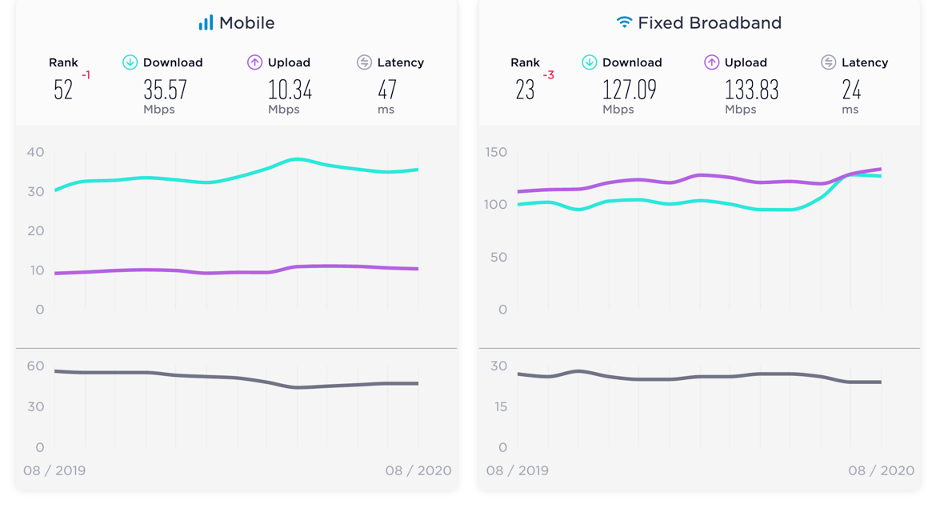
Mobile download speeds in Japan actually saw an increase in March and April, possibly as a result of traffic shifting off of mobile networks as more people stayed home. Mobile upload speeds also saw a nominal increase. In contrast, fixed broadband upload and download speeds in Japan saw slight declines as more people got online from home, but these speeds recovered starting in June.
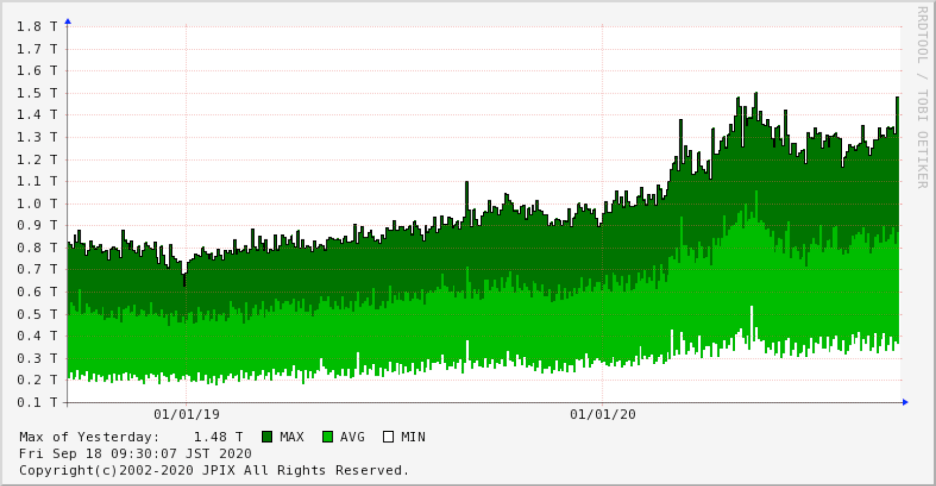
At the Japan Internet Exchange (JPIX), the “Metropolitan” traffic graph shows traffic building as 2020 began, with a clear peak heading into March. Traffic subsided through summer, but it remains higher than pre-pandemic levels.
Nigeria
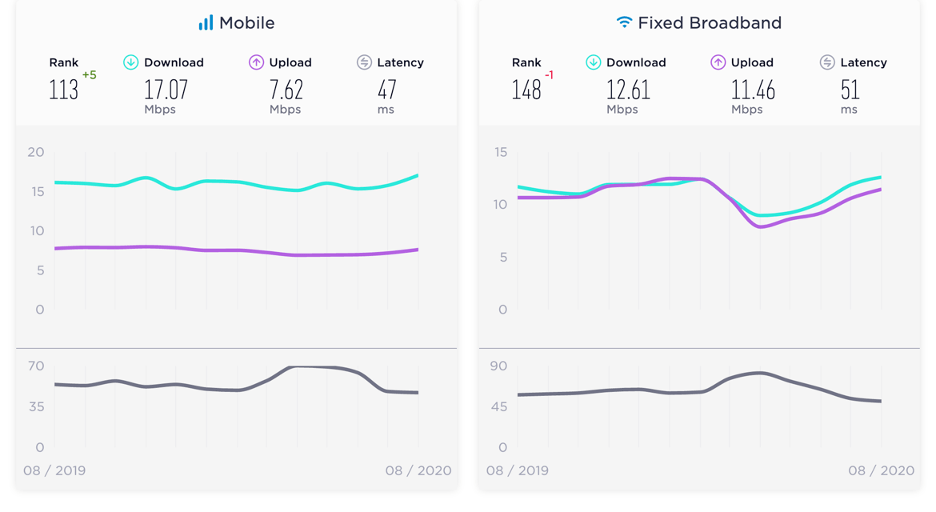
Mobile upload and download speeds have remained rather consistent throughout 2020 in Nigeria, and don’t appear to have been affected in a meaningful way by COVID-related traffic shifts. However, while fixed broadband speeds were growing as the year began, both uploads and downloads got slower in March and April before starting to recover.

Traffic at the Internet Exchange Point of Nigeria (IXPN) was around 80 Gbps in January and February, but began to increase through March, with average peaks nearly 50% higher in July and August. Traffic levels at IXPN remain higher than before COVID-19. It isn’t clear what caused the spike in traffic in late June/early July.
United Arab Emirates
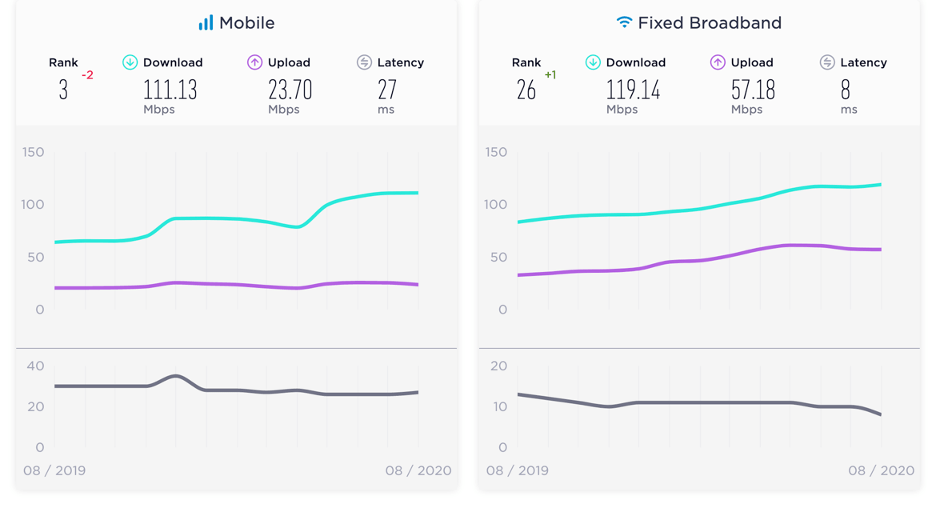
In the UAE, mobile download speeds increased heading into 2020, but saw a slight decrease in April. However, they recovered quickly and subsequently grew by almost 50% over the following months. Mobile upload speeds have remained consistent. Unexpectedly, both fixed upload and download speeds have experienced strong growth and appear to have been unaffected by pandemic-related traffic growth.
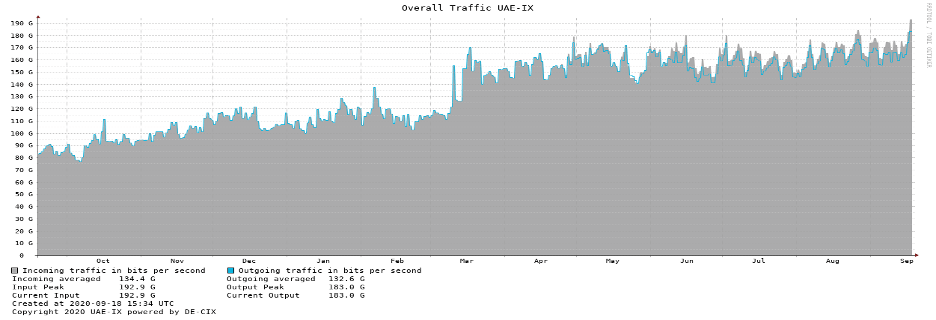
At the UAE-IX, traffic levels increased by around 25% during March, and have remained elevated over the last six months. It appears that traffic may continue to trend higher as we head towards the end of the year.
Brazil
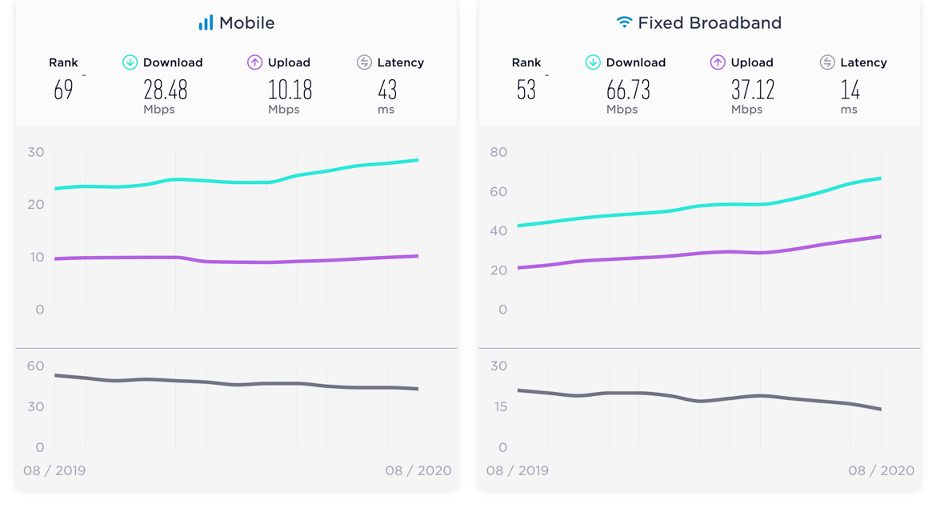
In Brazil, COVID-19 spread slowly during March and April, but the number of new cases grew aggressively through July and August as some lockdowns eased. Download speeds on both fixed and mobile networks within the country increased 15-20% over the last six months, despite the shifting traffic patterns across both types of networks. Fixed broadband upload speeds have also seen strong growth, while mobile upload speeds have experienced a much lower growth rate.
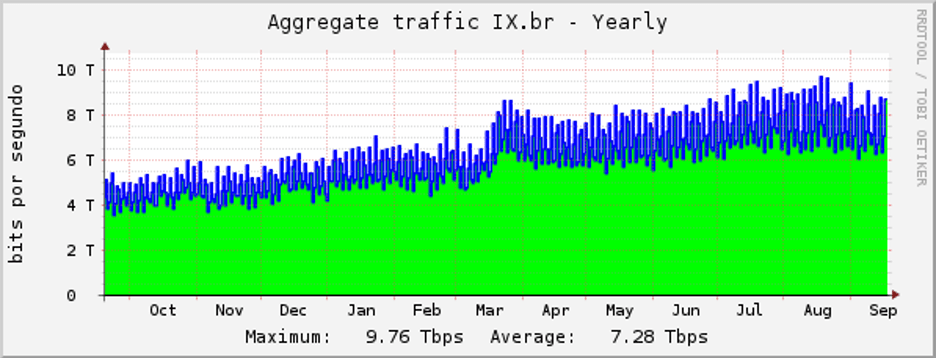
Aggregate traffic statistics across the Brazil Internet Exchange (ix.br) locations show a clear increase during March, even though widespread lockdowns in the country didn’t begin until May. After lockdowns started, traffic levels continued to grow, albeit at a slower rate than seen in March. Traffic levels remain 30-40% higher than before the pandemic.
Canada
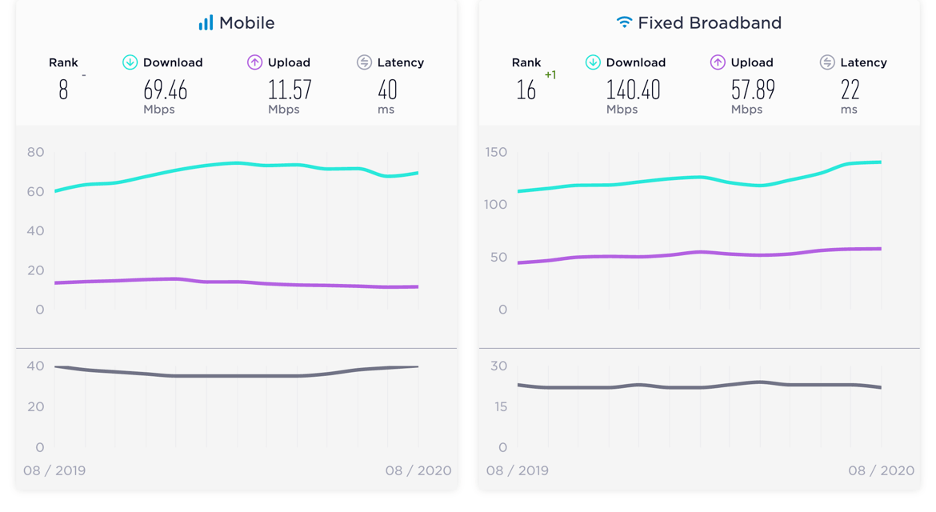
In Canada, Indigenous communities and the north of the country have been particularly hard hit by a lack of reliable Internet connectivity during COVID-19. On average across the whole country, however, upload and download speeds on both fixed and mobile Internet connections have not seen marked changes over the last six months. Mobile upload and download speeds have shown a slight decline, while fixed upload and download speeds have grown 5-10%.
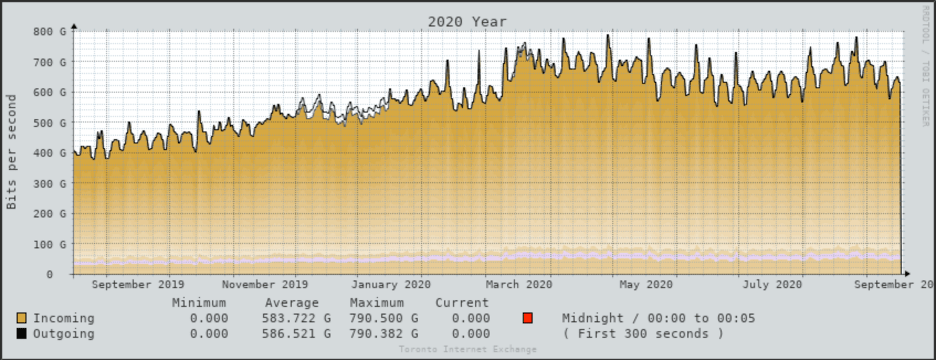
Similar to the traffic trends seen at many other Internet exchanges, traffic at the Toronto Internet Exchange (TORIX) grew in mid-March as COVID-19 spread throughout North America and schools and businesses shut down. Traffic remained elevated through May but dropped during the early summer months before starting to grow again in August.
Critical properties
Although connection speeds in some of the countries surveyed above may have dropped due to changes in usage patterns during lockdown periods, they have generally since recovered. In other countries, connection speeds continued to increase despite higher levels of Internet traffic. Across the surveyed IXPs, all appeared to handle the growth in traffic seen over the last six months without any issue, with these higher traffic volumes becoming setting a new baseline.
While many governments were not prepared for COVID-19, the Internet was – thanks to the critical properties that underpin its strength and success. It enabled many people who have stable access to keep working, learning, socializing, and collaborating on solutions to the ongoing pandemic. The Internet’s foundation enables it to be resilient, agile, and responsive to the shifting needs of populations worldwide.
However, the Internet is only strong and successful for those that have access to it. Its robustness and ability to with cope rapidly shifting demands don’t benefit the under- and unconnected populations around the world. Now, more than ever, we need policymakers to work together to close the digital divide
Image by Victor He via Unsplash

